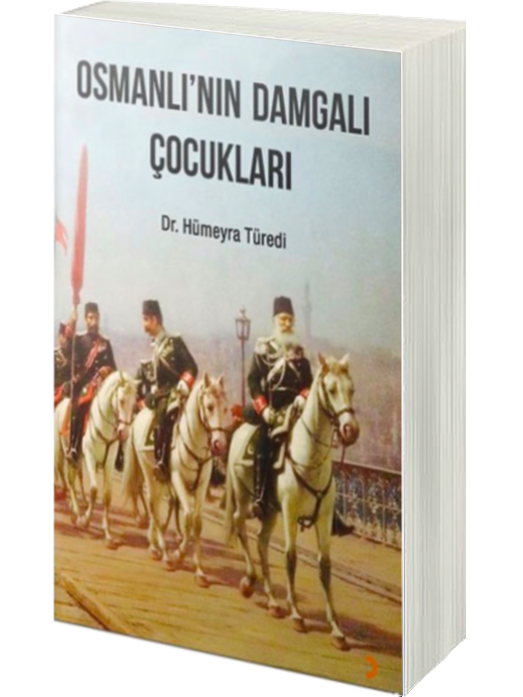
The idea behind CLIL (Content and Language Integrated Learning) is simple but powerful: learn a subject, learn a language — do both together. But what this looks like in real classrooms depends a lot on where you are. When you look at how different countries use CLIL, you see how flexible it can be — and how it adapts to what local students and teachers really need.
Take Spain, for example. CLIL has been part of big bilingual education reforms there since the early 2000s, especially in places like Madrid and Andalusia. Schools often teach science, PE, or music in English. One reason it works well is that the government backs it up — they give teachers training, materials, and a clear plan. Schools are also encouraged to take a whole-school approach, so CLIL isn’t just an experiment, it’s part of the school’s language culture. Studies show students in Spanish CLIL programs often speak better English than their peers — and they still keep up with the regular subject content.
Finland is another interesting story. There, CLIL often starts young, in first or second grade. Kids might learn in English or Swedish, depending on the region. Finnish teachers have a lot of freedom to plan lessons that work best for their students — they can mix subjects, like science and art, and use lots of hands-on projects. The whole approach is student-centered and balanced. Teachers keep an eye on students’ feelings and language needs, not just test scores.
In Estonia, CLIL has a unique twist. It’s used not just for English learning, but also to strengthen the national language in schools with different language backgrounds. For example, Russian-medium schools use CLIL to help students learn more Estonian, while Estonian-medium schools teach some subjects in English. This approach supports bilingualism and helps bring communities together. Estonia also works closely with universities and European programs to train teachers and bring CLIL into regular public schools.
Japan shows how CLIL can work in higher education too. Many universities there offer CLIL courses in business, science, or engineering. These are taught in English, preparing students for global jobs. The Japanese model focuses on giving students the tools they need to use English in real work and study situations — not just perfect grammar. Professors get special training to teach CLIL lessons that include teamwork, presentations, and research projects.
And then there’s Colombia. Here, CLIL is part of bilingual education plans that reach even rural or low-income areas. Schools combine subjects like science with English, using local examples that make sense to students’ everyday lives. One project used CLIL in agricultural science lessons — helping students learn about farming in English, so the language felt real and useful. Teachers see CLIL as more than just a method to teach English; it’s also a way to make education more inclusive.
When you look at all these places, a few things stand out. Good CLIL needs solid teacher training, flexible programs, support from schools or the government, and lessons that feel real and connected to students’ lives. Most importantly, it must fit the local culture and language needs — there’s no one perfect recipe.
In the end, CLIL works best when it stays adaptable. Whether in a city school in Spain or a village classroom in Colombia, the goal is the same: help students learn content and language together, and open doors to more opportunities. These stories show that CLIL can thrive anywhere — when people believe in it and make it their own.
References
- Lasagabaster, D., & Ruiz de Zarobe, Y. (2010). CLIL in Spain: Implementation, Results and Teacher Training. Cambridge Scholars Publishing.
- Nikula, T., Dafouz, E., Moore, P., & Smit, U. (2016). Conceptualising Integration in CLIL and Multilingual Education. Multilingual Matters.
- Mehisto, P., Marsh, D., & Frigols, M. J. (2008). Uncovering CLIL. Macmillan Education.
- Tsuchiya, K., & Pérez Murillo, M. D. (2019). Content and Language Integrated Learning in Japanese Higher Education. Springer.
- Banegas, D. L. (2013). Integrating content and language in English language teaching in secondary education: Models, benefits, and challenges. Studies in Second Language Learning and Teaching, 3(4), 487–508.
Vaka İncelemeleri: Dünyadan Başarılı CLIL Uygulamaları
Dr. Hümeyra Türedi
CLIL (İçerik ve Dil Bütünleştirmeli Öğrenim) yaklaşımının ardındaki fikir basit ama güçlüdür: Bir dersi öğren, bir dili öğren—ikisini aynı anda yap. Ancak bunun sınıfta nasıl göründüğü, büyük ölçüde bulunduğunuz ülkeye bağlıdır. Farklı ülkelerde CLIL’in nasıl uygulandığına baktığınızda, yaklaşımın ne kadar esnek olduğunu ve yerel öğrenci ve öğretmen ihtiyaçlarına nasıl uyum sağladığını görebilirsiniz.
İspanya buna iyi bir örnektir. 2000’li yılların başından bu yana CLIL, Madrid ve Endülüs gibi bölgelerde yürürlüğe giren iki dilli eğitim reformlarının bir parçası olmuştur. Okullarda genellikle fen bilgisi, beden eğitimi veya müzik dersleri İngilizce öğretilir. Bunun başarılı olmasının bir nedeni de devlet desteğidir—öğretmenlere eğitim, materyal ve net bir plan sunulmaktadır. Ayrıca okullara bütüncül bir CLIL yaklaşımı benimsemeleri teşvik edilir. Yani CLIL yalnızca bir deney değil, okulun dil kültürünün bir parçasıdır. Araştırmalar, İspanyol CLIL programlarındaki öğrencilerin hem İngilizce’yi daha iyi konuştuğunu hem de ders içeriklerini geri kalan akranları kadar iyi öğrendiklerini göstermektedir.
Finlandiya da dikkate değer bir örnektir. CLIL burada genellikle erken yaşta, birinci ya da ikinci sınıfta başlar. Öğrenciler bölgeye bağlı olarak İngilizce veya İsveççe eğitim alabilir. Finlandiyalı öğretmenler, öğrencilerine en uygun dersi planlama konusunda büyük bir özgürlüğe sahiptir—fen ve sanat gibi dersleri birleştirebilir ve bolca proje temelli çalışmaya yer verebilirler. Bu yaklaşım öğrenci merkezlidir ve dengelidir. Öğretmenler sadece sınav puanlarına değil, öğrencilerin duygularına ve dil ihtiyaçlarına da dikkat eder.
Estonya’da CLIL biraz daha farklı bir amaçla kullanılır. Burada sadece İngilizce öğretimi için değil, farklı dil arka planına sahip okullarda ulusal dili güçlendirmek için de kullanılır. Örneğin, Rusça eğitim veren okullarda öğrencilerin Estonca becerilerini geliştirmek için CLIL uygulanırken, Estonca eğitim veren bazı okullarda da bazı dersler İngilizce işlenir. Bu model, iki dilliliği destekler ve topluluklar arasında köprü kurmaya yardımcı olur. Estonya, öğretmen eğitimini geliştirmek ve CLIL’i devlet okullarına yaymak için üniversitelerle ve Avrupa programlarıyla iş birliği yapmaktadır.
Japonya, CLIL’in yükseköğretimde nasıl uygulanabileceğini gösterir. Pek çok üniversite, işletme, fen ya da mühendislik gibi alanlarda CLIL dersleri sunar. Bu dersler İngilizce verilir ve öğrencileri küresel iş ortamlarına hazırlar. Japon modeli, öğrencilerin sadece doğru gramer kullanmasını değil, İngilizce’yi gerçek iş ve akademik bağlamlarda kullanmalarını hedefler. Profesörler, CLIL odaklı derslerde ekip çalışması, sunumlar ve araştırma projeleri gibi etkinlikleri planlamak için özel eğitim alır.
Kolombiya ise CLIL’in kırsal ve düşük gelirli bölgelere nasıl ulaşabileceğini gösterir. Burada CLIL, iki dilli eğitim planlarının bir parçasıdır. Okullarda fen gibi dersler İngilizce ile birleştirilir, üstelik dersler öğrencilerin günlük hayatlarına hitap eden yerel örneklerle işlenir. Örneğin, tarım bilimi dersleri İngilizce öğretilerek öğrencilerin hem mesleki bilgi hem de dil becerileri kazanması sağlanır. Öğretmenler, CLIL’i sadece bir dil öğretim yöntemi değil, eğitimi kapsayıcı hâle getiren bir araç olarak görmektedir.
Tüm bu örneklerde öne çıkan bazı ortak noktalar vardır: Başarılı CLIL uygulamaları, güçlü bir öğretmen eğitimi, esnek programlar, okul veya devlet desteği ve öğrencilerin hayatlarına anlamlı biçimde dokunan dersler gerektirir. En önemlisi, CLIL her ülkenin kendi kültürüne ve dil ihtiyaçlarına uygun olmalıdır—tek tip bir formül yoktur.
Sonuç olarak, CLIL en iyi şekilde esnek kaldığında işler. İster İspanya’da bir şehir okulunda ister Kolombiya’da bir köy sınıfında olsun, amaç aynıdır: Öğrencilerin hem içerik hem de dili birlikte öğrenmesini sağlamak ve onlara daha fazla fırsat sunmak. Bu hikâyeler, CLIL’in her yerde gelişebileceğini gösteriyor—yeter ki insanlar bu yaklaşıma inansın ve onu sahiplenip kendi bağlamlarına uyarlasın.
Kaynakça
Lasagabaster, D., & Ruiz de Zarobe, Y. (2010). CLIL in Spain: Implementation, Results and Teacher Training. Cambridge Scholars Publishing.
Nikula, T., Dafouz, E., Moore, P., & Smit, U. (2016). Conceptualising Integration in CLIL and Multilingual Education. Multilingual Matters.
Mehisto, P., Marsh, D., & Frigols, M. J. (2008). Uncovering CLIL. Macmillan Education.
Tsuchiya, K., & Pérez Murillo, M. D. (2019). Content and Language Integrated Learning in Japanese Higher Education. Springer.
Banegas, D. L. (2013). Integrating content and language in English language teaching in secondary education: Models, benefits, and challenges. Studies in Second Language Learning and Teaching, 3(4), 487–508.



